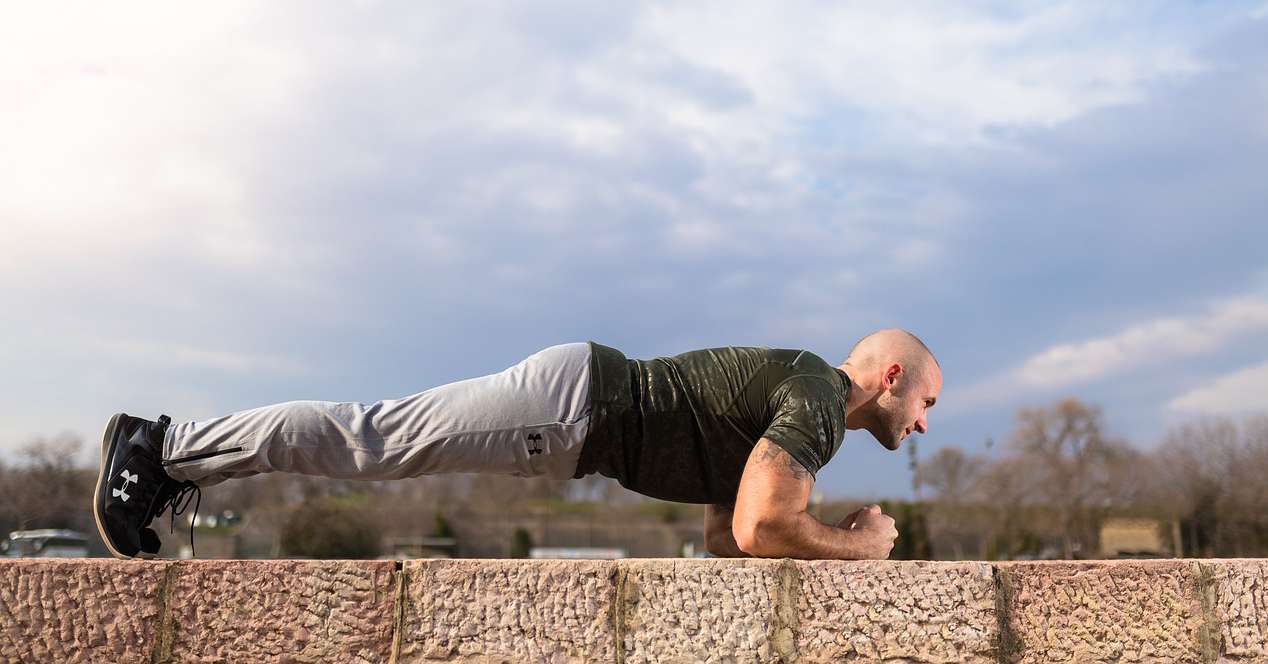
Alexander Zass was a prisoner of World War I, and he is believed to be the originator of isometric training. During his captivity, he pressed the bars and chains that held him prisoner and reaped great benefits. Shortly after, he began to promote this type of training until he became known worldwide.
What is isometric training?
In general, we can say that the muscle can contract in several ways. It can be done in an obvious way, contracting to shorten distances (push up, for example), and we will call it concentric contraction. You can also strain when lowering a load, or holding it, such as lowering the weight in a bicep curl. This type of contraction is known as an eccentric contraction, and it happens when the muscle is tensed as it lengthens. And one last type of contraction, we have the isometric contraction, which occurs when the muscle is tensed while the length does not change. Examples of this are poses in body building or pushing against an immovable object, such as a wall.
One of the main benefits of isometric training is that the body is capable of activating almost all available motor units, something highly complicated to do. In 1950, researchers Hettinger and Muller found that putting in a single daily effort of two-thirds of a person's all-out effort for six seconds at a time, and in ten weeks, increased strength by 5% per week.
Of course, one of the most outstanding benefits is the amount of time spent on each exercise. Let's imagine that we are performing bench press. We only spend a couple of seconds working with each angle of the joint, so if we do an exercise that mimics the press, we can hold it for several seconds. So if you have any joint mobility problem, some specific isometrics can help you a lot.
As in any training, it is necessary to know how and when to perform isometrics, and above all, how improve any deficiencies. There will be people who have difficulties with muscle elasticity or speed of movement, so your coach (or yourself) should assess these capabilities.
How to perform isometrics?
I am going to advise you two types. Both work correctly, but one will need sports equipment and the other you can do with your own body. The use of material is ideal for someone looking to quickly increase strength, while if we do it with our weight we will be improving performance. Even this last option is also highly recommended for injury rehabilitation.
Isometrics with sports equipment
I am going to give you some much more functional ideas to train. You are going to need a bar, a bench and a lot of weight. We'll focus on imitations of the bench press, squat, and deadlift.
- Bench press and squat. Performing the isometric contraction is simple. Assume the squat or bench press and place the bar in the strongest zone of the movement (down squat, up press). Hold as long as you can for six to eight seconds.
- Dead weight. Load the bar with a weight that is well above your one repetition max. It is important that the bar does not move at all once you go down. As with the pressing and squat variations, you will hold as hard as possible for six to eight seconds.
Isometrics with your body weight
When we perform exercises with our own weight, what strikes many is the lack of feeling the push or pull of the weight. These types of isometrics are performed as static contractions in a single position.
The exercises that I propose are: squat and stride. In both, we assume a position in the middle of the range of motion and we tense as much as we can. The difficulty is that you will not only have to tense the agonist muscles (the ones that contract while you squat), but also the antagonists (the ones that do the action).
isometric training should be used as a regular strength routine, getting to do it about 3 or 4 times a week. Be careful what you do, as this workout won't leave you sore or tired, but the nervous system can take up to five times longer to recover than the muscular system. So the effects of isometric training can be prolonged even after the session is over.